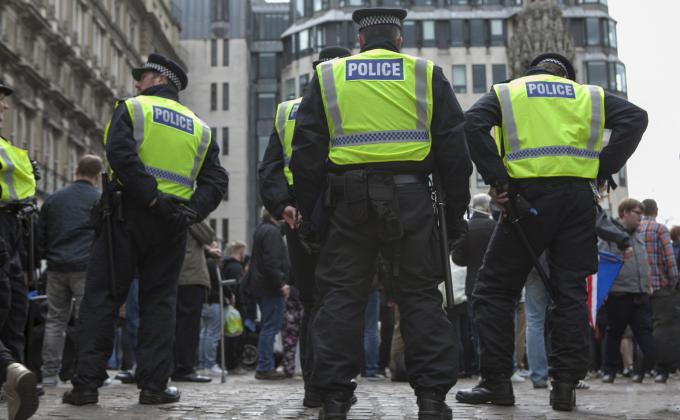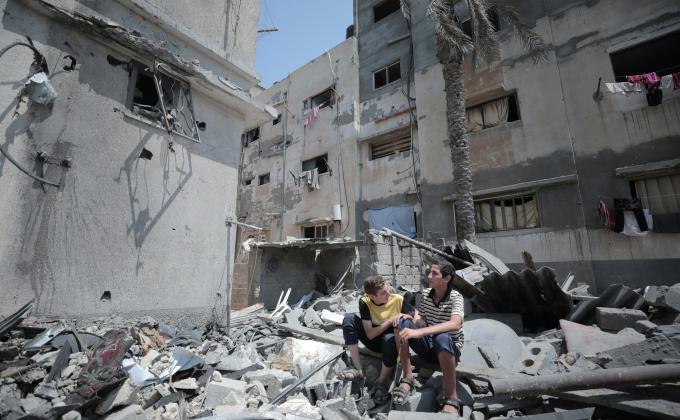Society is confronted by an increasing number of attacks related to the so-called incel movement. In May this year a man went on a shooting spree in Glendale, Arizona. He allegedly told his prosecutors that he identified himself as an incel and that he targeted couples. This attack came days after Canadian authorities charged a minor for carrying out an incel-inspired terrorist attack—the first time these charges have been laid. The perpetrator killed a woman and wounded a man and a woman during a stabbing attack in Toronto in February.
This Perspective approaches the topic of incel violence from the field of gender studies and narratology—the study of stories and narratives. Approaching the topic of incels by using frameworks devised in these fields, and analysing the narratives by incels using the analytical framework devised to analyse female autobiographies in particular, can provide insights that can be valuable to practitioners, policy makers, and academics and to the general public who are trying to understand and respond to this relatively new phenomenon.
In this Perspective, three issues are presented that can add value to the study and discourse pertaining to incel violence. First, in order to understand the perpetrators of incel violence, we should overcome (legitimate) resistance to their own personal narratives and accounts and closely read them in order to accurately assess motives and intent. Second, men are targeted by incel violence too. Third, women cannot be ruled out as potential perpetrators. This Perspective concludes with a discussion of whether incel violence should indeed be considered terrorism and closes by making a case for a consciously gender-neutral approach to the topic.
Introduction
Incel stands for ‘involuntary celibate’, a term that originally stems from a non-violent online support community for those who were longing for an intimate relationship but could not find one, which was established in the 1990s by a Canadian woman in her mid-twenties. Today, incels are not an actual organisation or group with a clear structure. They are an undefined group of people that is largely active on online fora and message boards. The term ‘incel’ is often associated with violence against women. The term ‘incel’ itself, however, refers de facto to people who desire a relationship but are not able to find one in a broader sense. By now, the term has become more and more associated with misogyny and male supremacy. This is not without reason. Generally, male incels do adhere to a train of thought in which women are dehumanized by only defining them by their ability to give sex to men, and they carry an intense anger towards women because they will not give it to incels. The movement is also increasingly associated with violence. Active calls for violence towards women—“Stacys”, in particular, in incel-speak, meaning attractive women who only want to be with attractive men—but also towards men—or “Chads”, men who get to have relationships because they are good looking, something that incels believe they themselves can never be.
By their own admission, incels generally tend to feel unfairly treated and to suffer from a self-perceived sense of illegitimacy, in more than one way. They classify society according to looks and genetic disposition and use rankings to divide people in categories. They are convinced that they themselves, as other incels, are on the low end of the scale, making it impossible for them to acquire or maintain relationships. This sense of illegitimacy that they are experiencing is key to their belief system and warrants further investigation. A good place to start is to listen to what they themselves have to say about these issues.
Including analysis of incel’s personal accounts in our assessments
Michael Kimmel wrote in his 1993 essay ‘Invisible Masculinity’ that “(…)men are the ‘invisible’ gender”. In it he argues that, even though there is a dominant male discourse in literature and other texts, hardly any are written on the actual experience of being a man. Therefore, Kimmel argues, men are not part of a history or discourse about their ‘gendered selves’, making their masculine identity more or less invisible.
Ego-documents of men—i.e. personal narratives, like autobiographies, manifestos, or online contributions about the self—then, are texts without a canon or tradition, yet which do not have a default framework for analysis. These include ego-documents of men who have committed atrocities which they claim are the consequence of their (perceived) insignificance as men in society, including personal accounts of perpetrators of incel violence.
When studying ego-documents of people who have gone on to commit acts of violence from a belief system so based on gender stereotyping as the incels’—be it a self-titled manifesto, a life story, an interview, or postings on message boards—it is useful to apply the framework of methods and insights available from gender studies, for instance those used to study female autobiographies. This helps to gain more insight into the role of (perceived) illegitimacy in incels’ drivers towards violence. Female autobiographies often contain elements that lament the marginalised position of their writers as women in society. In the tradition of analysis of female autobiographies, many methods of looking at these often deeply personal texts give centre stage to women’s marginalised position in society. Such methods can also be applied to analyse texts by men who feel marginalized or subordinated by society, as incels, by their own words, say they feel.
One of the central themes in the discourse on analysis of female autobiographies, as for instance described by Estelle Jellinek, is the theme of inner conflict. In their autobiographies, women are often found to perceive a sense of inner conflict and of a dual self, due to, on the one hand, a persistent dichotomy between external appearances and expectations and, on the other hand, personal reality, desires, and autonomy. This frequent incompatibility of women’s own subjectivity and external expectations that is the result of the position of femininity in society lies at the basis of a problematic inner fragmentation—whether they write in the beginning of the twentieth century, at the beginning of the second millennium, or today. Anais Nin, a well-known autobiographer, has stated along similar lines that “we are all engaged in the task of peeling off false selves, the programmed selves, the selves created by our families, our culture, our religions”.
Perpetrators of incel violence, by their own words, feel marginalised and illegitimate. This, combined with living in today’s era, when stereotypical gendered roles are changing and where traditional male entitlement is being challenged, and where, vice versa, traditional female roles are no longer all-defining for women’s potential. This is a welcome dynamic, but it can create, for some, a situation of inner conflict. For instance, this may include those who define themselves as marginalized and subordinated, as incels commonly do, but who at the same time feel a sense of entitlement, whether it is to power, or to relationships and sex, as male incels have stated they indeed feel. In a time where cultural and societal shifts erode some of these privileges that white men used to benefit from, this can intensify this inner conflict.
When analysing the ego-documents of people (men, up until now, more about that later) who have committed violence linked to the incel movement, this source material should be used to its full potential. This includes actively listening to what these perpetrators have to say about their position in society, about the reasons that they came to commit their attack and who or what they wanted to target. But, also, about their sense of illegitimacy as men, their inner conflicts. This is a way of looking at these documents and listening to these narrators that is also argued for in the theoretical framework for analysis of female autobiographies. The narratives and voices of perpetrators of incel violence are sometimes dismissed as material for study on the basis of the fact that the authors are easily dismissed as mentally ill, or on the basis of the premise that they deserve no audience, because of the horrors their writers have committed. Considering the horrific nature of their acts, this is an understandable reaction. Dismissing the voices of these men in analysis by labelling them as mentally ill or confused, however, echoes what has been seen within the tradition of female autobiography, where it is commonly known that personal stories of women who could be labelled unstable in any way were met with significant suspicion. This kept people from understanding the effects of perceived illegitimacy on these women—and on the ways they acted out in response. This Perspective argues that this is also the case with the personal texts left by perpetrators of incel-related violence—sometimes because of the mentally unstable label, sometimes unintentionally because of analysts own biases.
In order to make the greatest use of these texts we should overcome our all too human resistance to these perpetrator’s voices and listen to what they have to tell us. We need to make sure that we do not mould their words to our own biases—which, in the case of analysing this phenomenon of incel violence is particularly hard to do, as it is so closely linked to personal and societal perceptions of gender, of masculinity of femininity, and all of us are in one way or another personally involved or affected by these.
When assessing the nature of these attacks, the motives and the intent, we should be closely reading these narratives and integrate the outcome of that reading into our assessments. If we take the time to do so, we come to some interesting insights to take away into the discussion on incel violence, some of which are elaborated on below.
Men are targeted by incel violence too
If we close-read the writings that perpetrators have left behind, we cannot deny that there are differences between their own take on their belief systems and their intentions, and the current description of the incel phenomenon in the academic discourse and mainstream discussions. These writings include those by Elliot Rodger—the perpetrator of the 2014 Isla Vista killings in California, USA—who left a lengthy autobiographical narrative ‘My Twisted World’ behind, and the interview with Alek Minassian—perpetrator of the 2018 Toronto Van attack—after he was arrested. They themselves clearly describe that they targeted men too, whereas in mainstream discussions on incel violence, the notion that only women are victims of incel violence is prevalent.
It seems like there is a general acceptance that incel violence always targets women and thus, that only violence aimed at women can be labelled incel violence. But this type of violence doesn’t just target women. It also targets men, and society on the whole. This Perspective by no means wants to underestimate or deny the misogynistic views many male incels have, nor contend the fact that violence driven by misogynist intention should be taken very seriously. To further this point, let’s examine closely the words of the perpetrators of two infamous cases of incel violence—the 2014 attack in Isla Vista, California, and the 2018 Toronto van attack.
Julia DeCook, Fellow at the Institute for Research on Male Supremacism (IRMS), contends that incels have a hyperfocus on purity, not just towards individuals but also towards society at large: their violence is not aimed at just controlling women, but sexuality in general. The perpetrator of the Isla Vista attack describes clearly who he wants to punish in the autobiographical narrative he left behind after the attack he committed: all people who are sexually active. He writes:
It was all fueled by my wish to punish everyone who is sexually active, because I concluded that it wasn’t fair that other people were able to experience sex while I have been denied it all my life.
It is quite clear that he does not only want to target women.
Later in the document, when he reflects on his attack plans, he makes this even more clear:
I will arm myself with deadly weapons and wage a war against all women and the men they are attracted to.
He continues:
First Phase will represent my vengeance against all of the men who have had pleasurable sex lives while I’ve had to suffer. (…) The Second Phase will represent my War on Women. I will punish all females for the crime of depriving me of sex.
In the interview with his arresting officers, the Toronto van perpetrator clearly states that his attack was aimed primarily at men. He referred to his deeds as an “incel rebellion” and describes it as follows:
It’s basically a movement of angry incels such as myself who are unable to get laid, therefore we want to overthrow the Chads, which would force the Stacys to be forced to reproduce with the incels.
When he continues describing who his targets were, he states:
Perpetrator: All of the alpha males.
Officer: All the alpha males. So the Chads.
Perpetrator: Yes.
Officer: So that’s – those are the people you’ll- that you want to kill?
Perpetrator: Yes.
Officer: Okay, alright, and who else?
Perpetrator: Any of the Stacey’s who do not wish to give their love and affection to the incels.
These accounts—and the fatalities among men that resulted from both attacks—make it clear that these men did not just target women, because they could not have relationships with them. They targeted both men and women, the perpetrator of the Toronto van attack even primarily targeted men. Limiting the definition of incel violence to those incidents of violence that target women, then, is problematic.
Women cannot be ruled out as potential perpetrators
The same goes for limiting thinking that only men are incels, and only men could act out based on their world views. There is a growing community of women who self-define as incels. The male incel community does not accept the fact that women can self-define as incels—this does not fit their worldview in which all women can always have sex and relations, no matter their appearance, meaning they cannot be involuntarily celibate, only voluntarily. Nevertheless, women who define themselves as incels—they often refer to themselves as femcels—adhere to a same belief system as their male counterpart: they classify society in terms of attractiveness, and feel they are at the far low end of that scale, leading to an inability to have relationships or sex.
Though even the fringes of the female incel community seem less aggressive than the fringes of the male incel community, it is unwise to rule out the potentially dangerous effects ‘inceldom’ can have on women—it has the same radicalizing potential. We live in a time and age where, not only are stereotypical male roles are changing, women are also increasingly able to create room for their own agency and ambition. This growing agency means there is increasingly room for anger, bearing in mind that room for legitimate anger for all is healthy, and female anger should by no means be seen as pathological in itself. The fact that women, like men, can and do get angry, and can act out on that anger, makes us conclude that femcels are as able or capable of violence as their male counterparts. They too are vulnerable to radicalization in these radical communities. The fringes of these communities are radical and these women may particularly rage at attractive people, men, but also other women. Aggression is visible through postings online, for instance on femcel-related subreddits, where femcels celebrate the growth of male suicide rates, ironically stating:
“78% of suicide rates world wide are men, what can we do to help them?”
There are also discussions where femcels object to the pressure they feel to ‘forgive and be positive’. A young woman for instance states:
“Damnit, I want to be as angry as I can. Hearing I have to just be positive and forgive brings me so much additional anger.”
We should not treat potential aggression or violence towards others from women who self-identify as incels as an unknown unknown: it is a known unknown, that we should not ignore. We should take into account that women, compared to men, are less likely to commit violence. However, ruling women out as potential perpetrators on a biased assessment of agency and anger is unwise. Similarly, it is important to not exclude femcels from the current discussions that aim at trying to understand the phenomenon of incels in general.
Terrorism and ideology?
There is an increasing interest in the crimes attributed to incels – whether attributed to them by governments, or by perpetrators themselves. This includes the debate on whether these instances of violence can and should be seen as terrorist action. Some assert that incel violence is not (yet) terrorism, while others state that the extreme fringes of the incel community and the violence they have committed should be considered terrorism.
There is no universally accepted definition of what constitutes terrorism. But we can distinguish some common ground. Terrorism is by definition political in its nature—which can include enforcing social change, or undermining social order, systems, or structures. The current debate on whether incel violence constitutes terrorism focusses largely on the discussion of whether the belief system of incels constitutes an ideology, and whether violence that stems from it can then be considered ideologically-driven violence. This Perspective argues that the cases of incel violence that explicitly aim to overthrow the social order—a form of social justice warfare—can and should be considered terrorism.[1]
For example, The Toronto van attacker referred to his own attack as a continuation of the “incel rebellion” that the Isla Vista attacker started. The latter is often stated to have committed his crime because he could not have relations with women, but on close reading his manifesto, what he calls his ‘ideology’ is more universal and coherent, though bizarre, and has the aim of overthrowing the present social order. He has an ideal worldview where women are no longer part of the public space, for which he has a plan that is to be executed over the coming generations, leading to a situation where procreation and sex are no longer one of the main drivers of men in this public space. According to the perpetrator, in a world without sex:
‘men will grow up healthily, without having to worry about such a barbaric act. All men will grow up fair and equal, because no man will be able to experience the pleasures of sex while others are denied it. The human race will evolve to an entirely new level of civilization, completely devoid of all the impurity and degeneracy that exists today.’
The attacker states that his purpose in life was to gain enough power in order to put him in a position to implement this societal change, but when he then meets disappointment after disappointment, he comes to the conclusion that he himself is not able to attain this power. He blames society for this, and women in particular, as they are not willing to accept his self-perceived absolute superiority: he describes himself as a ‘highly intelligent and magnificent person that is destined for great things’.
Here we come to the question that is often prevalent when we try to discover the intentions of a perpetrator of violence: did he, in the end, commit his attack in order to start a social revolt that he thought he could set off? Or were his personal drivers—disappointment, social alienation, suicidal tendencies, or other—in the end what made him commit the attack? As in any such debate, these two intentions are not mutually exclusive. Terrorists are known to use extremist narratives or calls to action as legitimation to carry out acts that also fulfil their personal needs. When looking at the Isla Vista perpetrator’s autobiography, it seems that this is the case here too. His attack, as stated in his manifesto, is motivated by him having nothing to live for now that he realised he cannot get the power and status that he needs in order to be the implementer of the social order he wants to see enforced. But he sticks to his own narrative of wanting to overthrow the social order, and uses it to legitimize his actions.
Conclusion
It is extremely difficult to overcome gender biases when analysing a phenomenon such as incel violence, that is so very closely linked to perceptions of gender in society. In the current discussion to understand and define what incel violence is, there are contributions that define this type of violence in such a manner that only violence against women can be qualified as incel violence. This seems to be taken up relatively unchallenged, potentially from an understandable need to underline the necessity to take violence against women seriously. The fact that perpetrators themselves clearly state that their attacks also target men, is largely neglected. This underlines the need for conscious distancing of one’s own sentiments and biases to stay objective when analysing this topic. Particularly earlier in the discussion, there was a visible bias as well with people underestimating the threat that these people pose or not willing to consider the possibility of incel violence being terrorism—possibly linked to a more wide spread underestimation of effects of misogyny.
‘Incel’, however, in principle, is a gender-neutral term, and refers to a perceived life circumstance that causes pain and anger, and can lead to violence, including self-abuse or suicide, domestic violence, hate crimes, and in extreme cases, even terrorist violence. The term is gender-neutral, and the definition of the phenomenon should have that same quality.
This phenomenon needs a consciously gender-neutral approach. One of the ways to support such an approach is to listen to what perpetrators, and the people involved in the incel movement (including women) have to say themselves. Their own words tell us that both men and women can be and are also targeted by incel perpetrators, and that women also self-define as incels – and can act on it, potentially in a violent way. It also tells us that at least in some cases, incel related violence is explicitly aimed at instigating an overthrow of our social order, which qualifies as the sort of political violence that should be seen as terrorism.
[1] It is interesting to compare the way incels build their belief systems and how some justify their violence aimed at changing the social order, with the similar perspective of radical feminism, the fringes of which led to the establishment of terrorist cells like the Rote Zora, which was declared a terrorist organisation by the German authorities. The group claimed responsibility for forty-five arson attacks and bombings which took place in the 1980s and 1990s.
Note: the author of this Perspective did not include links or references in the text to the primary sources used when citing the perpetrators of the Isla Vista attack and the Toronto van attack, nor when citing forum postings by incels. This is a conscious choice in order not to lower the threshold to access this material that has the potential to incite hatred or radicalize. Below, the sources are named without URLs. For more details please contact ICCT.
- Citations of the Isla Vista perpetrator all from his manifesto:
-
- Rodger, Elliot. ‘My Twisted World: The Story of Elliot Rodger’
- Rodger, Elliot. ‘My Twisted World: The Story of Elliot Rodger’
- Citations of the Toronto van perpetrator all from a transcription of his police interview:
- Electronically Recorded Interview of Alek Minassian by Detective Robert Thomas (2917) of the Sex Crimes Unit Polygraph Unit on Monday, April 23, 2018 at 22:46 hours
- Electronically Recorded Interview of Alek Minassian by Detective Robert Thomas (2917) of the Sex Crimes Unit Polygraph Unit on Monday, April 23, 2018 at 22:46 hours
- Citations from femcel message board posting accessed via the subreddit r/pinkpillfeminism








